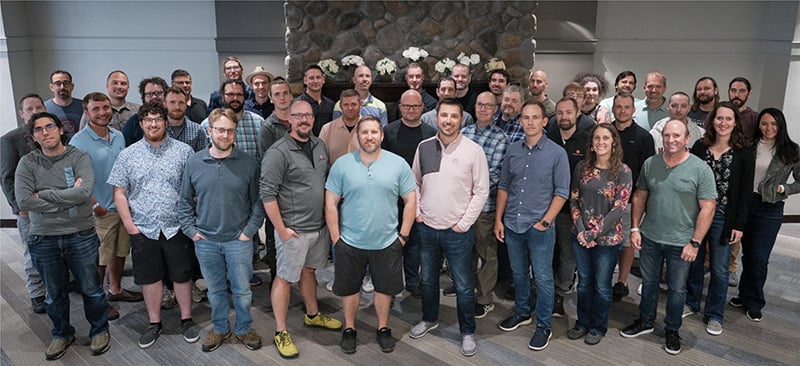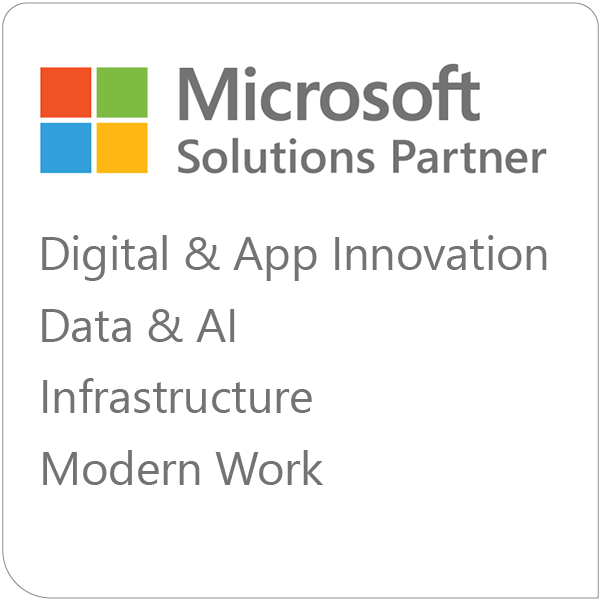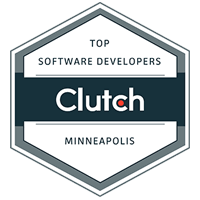In This Blog
- What Is Microsoft Graph?
- Microsoft Graph Explorer
- Why Microsoft Graph is Essential for Modern Businesses
- Closing Thoughts
- FAQ
Whether you're in finance, retail, manufacturing, or tech, every organization relies on an ever-growing pool of data. Emails, calendars, documents, org charts, device info, meeting notes: it’s all there, scattered across different tools. The real challenge? Making that data useful.
Microsoft Graph is Microsoft’s answer to that challenge. It acts as the unified API that connects data across Microsoft 365 and Microsoft Entra (formerly Azure Active Directory), giving organizations a central way to use their data.
Let’s break down how it works, and how it might help your team save time, reduce friction, and start building smarter tools with AI.
What Is Microsoft Graph?
Microsoft Graph connects all the different data sources across the Microsoft 365 ecosystem, including apps, devices, and users, and gives developers a consistent way to access information.
Some examples of what Graph can connect:
-
Outlook emails and calendar events
-
Microsoft Teams messages and meeting transcripts
-
Word, Excel, PowerPoint, and OneNote files
-
SharePoint and OneDrive content
-
User accounts, groups, and org charts
-
Device management and compliance info
On their own, each of these tools are valuable. But when pulled together with context, they become even more powerful. Microsoft Graph helps teams do exactly that by letting them search, map, and connect the dots across systems.

Once your data is centralized in one place, the next step is figuring out how to put it to work. At a high level, Microsoft Graph APIs let you organize and link your data in meaningful ways. For business leaders, this opens the door to more informed, data-driven decisions, and a clearer view of how everything fits together.

Microsoft Graph Explorer
One method of accessing your data is programmatically with the Microsoft Graph Explorer.
To get familiar with the Microsoft Graph Explorer, you can use the demo environment thatʼs created and managed by Microsoft.
- First, visit: https://developer.microsoft.com/en-us/graph/graph-explorer
- Once you click the URL, youʼll see a few different sample queries for getting started within the Microsoft Graph Explorer.
- For testing purposes, click the my profile button.

- Youʼll then see a GET request to a URL with the path.
- Click the blue Run query button.

Youʼll now see in the Response preview a sample output of the API call.

With Microsoft Graph Explorer, you can programmatically search through the data in your Azure Tenant.
Why Microsoft Graph is Essential for Modern Businesses
Let’s walk through a real-world example of how Microsoft Graph supports modern business practices.
Imagine your business has been around for a while. Over the years, you’ve built relationships with many customers, and your sales team has grown alongside that customer base. Along the way, you've gathered a lot of valuable information:
- Emails

- Chats
- Meetings
- Organizational structures (who reports to who and who is leading each portion of the business)
- Files
As new team members join the sales organization, they’ll need quick context to effectively engage with existing customers. Traditionally, that might mean sitting through multiple meetings or digging through siloed systems to piece together what they need.
With Microsoft Graph, that process looks very different. Because all of that customer data is connected and accessible from a single place, your team can find the background they need in a fraction of the time, leading to smoother handoffs, more productive conversations, and stronger relationships.
Closing Thoughts
The best way to think about Microsoft Graph is a collection of various data sets and those data sets are built off of the data that already exists with Office 365 and Microsoft Entra. The “data setsˮ are then used to build AI-driven applications that fit the needs of anyone who needs to use the application for anything from consolidating meeting notes and times to helping sales professionals get a better understanding of the customers theyʼre working with.
FAQ
What types of data can Microsoft Graph access?
Microsoft Graph gives you access to a surprisingly broad spectrum of data across your Microsoft 365 environment. This includes emails and calendars from Outlook, Teams messages and chat history, SharePoint and OneDrive documents, user profiles, group memberships, org charts, and even device compliance details and user settings from Microsoft Entra.
Think of it as a unified gateway to everything your team interacts with on a daily basis: meetings, documents, conversations, workflows, and more. It doesn’t just expose surface-level data, either. Graph allows you to dig into relationships between people, documents, and events, giving you powerful insight into how work is actually getting done across your organization. Whether you're building reports, automating workflows, or feeding data to an AI model, this level of access makes it possible to create more connected, intelligent tools.
Is Microsoft Graph secure?
Absolutely. Microsoft Graph is built on Microsoft’s trusted cloud infrastructure, and security is at the core of how it operates. All access to Graph is managed through Azure Active Directory, which means every request must be authenticated and authorized with the appropriate level of permissions.
Developers and apps can’t just tap into data without approval. Access must be explicitly granted, and IT admins retain full control over what data is shared, who can access it, and under what conditions. This is especially critical for sensitive information like HR records, internal communications, or financial data.
On top of access control, Microsoft Graph enforces encryption in transit and at rest, along with compliance with enterprise standards like GDPR, HIPAA, and FedRAMP. If your organization already relies on Microsoft 365 for secure communication and collaboration, then using Graph means you’re staying within those same well-tested guardrails.
Can I use Graph without being a developer?
Yes and no. If you're just looking to explore what kind of data is available or test some basic queries, tools like Microsoft Graph Explorer make it easy to experiment without writing a single line of code. It’s perfect for IT administrators, technical analysts, and curious professionals who want to see what’s possible.
That said, if your goal is to build something, like a dashboard that automatically pulls in project updates or a workflow that triggers emails when certain data changes, you’ll need to involve a developer. The real power of Graph comes from using it in applications that streamline or enhance day-to-day work, and those use cases usually require some engineering work. That’s where working with a team like Emergent Software can help turn your ideas into something real and scalable.
How does Graph relate to AI in Microsoft tools?
Microsoft Graph is one of the main engines behind AI in Microsoft 365. Microsoft Copilot can suggest meeting times, draft emails, and surface relevant files. Copilot knows what meetings you have, what topics you've been discussing, what documents you've touched recently, and who else is involved, because Graph ties all that information together under the hood.
Graph also enables more custom AI applications. Developers can build models that analyze organizational behavior, predict customer needs, or recommend next steps for projects, because they have access to real-time data from across your business. Without Graph, AI features would be operating in the dark.
Can Graph work with third-party tools?
Yes, and this is where things get really interesting. Microsoft Graph is designed as a RESTful API, meaning it can integrate with just about any system that supports modern APIs. That includes customer relationship management (CRM) platforms, analytics tools, HR systems, and even proprietary in-house apps.
Let’s say you have a third-party project management tool but still want to surface relevant Teams messages, calendar invites, or OneDrive documents directly inside that tool. With Graph, you can build that bridge. It’s especially useful if your organization is juggling multiple platforms and wants to create a more unified experience for employees.





